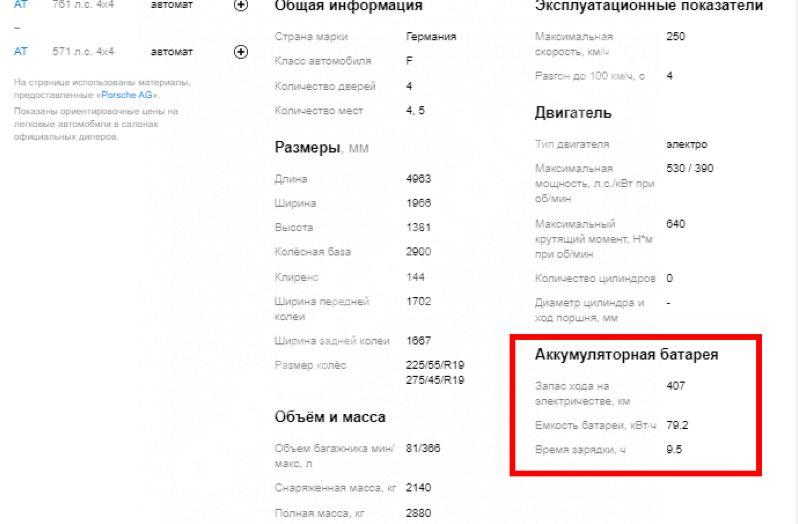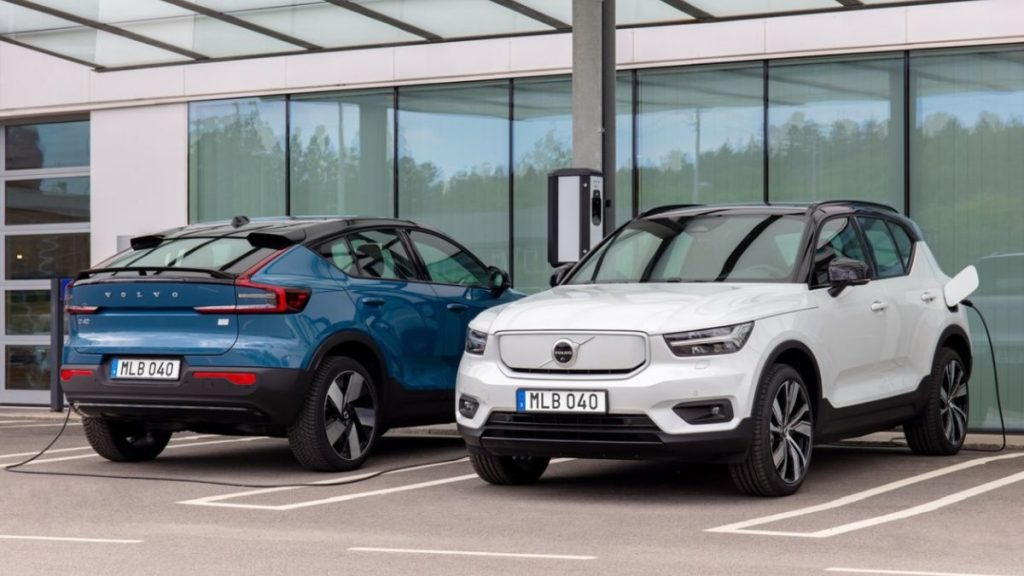
How much electricity do you need to charge an electric car? Introducing the calculations
Content
- How to charge an electric car at home?
- Not only sockets - there is also a wall box
- How much does it cost to charge an electric car? Let's start with the car
- How much does it cost to charge an electric Volvo C40 at home?
- How long does it take to charge an electric Volvo C40 at home?
- Home charging costs can be further reduced
- Cost optimization - use Volvo on-board electronics
How to charge an electric car at home?
The answer to this question is simple. You can charge an electric car from any household outlet connected to a 230 V mains that is widespread not only in our country. This phrase alone dispels one of the loudest myths associated with electromobility. We are talking about the assertion that electric cars have nowhere to charge. You can charge them almost anywhere. Of course, in a conventional electrical installation, there are quite significant limitations in terms of use, primarily related to the maximum power that an electric vehicle can draw from ordinary household outlets. However, it is worth remembering that there is a huge difference between "it can't be done" and "it will take a long time." In addition, people who are interested in an electric car have a really wide range of options in terms of charging an electric car in their own home. They do not have to be limited to low-power 230 V sockets.
Not only sockets - there is also a wall box
Many electric vehicle manufacturers offer various forms of customer support in the field of charging. In the case of Volvo, buyers of all-electric and electrified (plug-in hybrid) vehicles from the Swedish brand can order a Volvo wall box. At the same time, it is worth emphasizing that Volvo, unlike many other brands, is not limited to offering the device itself - the charger. The company offers a comprehensive installation service along with the device. This means that when ordering a new electric or electrified Volvo model in the Volvo configurator, we can request a wall station up to 22kW with a comprehensive installation service including an energy plant audit in our home. Why should you be interested in a wall box? Because this device allows you to charge a fully electric car up to five times faster. And most importantly, the price for the consumed electricity will still be as low as in the case of charging from a conventional outlet. Okay, how much does it cost?
How much does it cost to charge an electric car? Let's start with the car
The cost of charging an electric vehicle depends on the model of the vehicle, and more specifically on the capacity of the traction battery, which is equipped with a particular model of the vehicle. For example, in the case of the Volvo C40 Twin Recharge, a more powerful version of the twin-engine electric coupe, the electric drive uses a 78 kWh traction battery. According to the manufacturer, this battery capacity allows you to overcome up to 437 km without recharging, according to measurements in the WLTP combined cycle. The parameter we need to pay attention to in the context of charging costs is the capacity of the batteries.
How much does it cost to charge an electric Volvo C40 at home?
The average price for 1 kWh of electricity taken from the electricity network at the most popular G11 tariff is currently PLN 0,68. This is the average amount, taking into account distribution fees and the cost of the energy itself. This means that a full charge of the Volvo C40 Twin Recharge traction batteries with a capacity of 78 kWh will cost approximately PLN 53. But in practice it will be less. For two reasons, the battery of an electric car is never completely discharged, so when fully charged, no energy equivalent to the total capacity of the battery is transferred. However, even at the cost of a full charge of PLN 53, at current fuel prices, this is enough for about 7 liters of gasoline or diesel fuel. Which, in the case of a fairly economical internal combustion vehicle with dimensions comparable to the Volvo C40, allows you to cover a much shorter distance than the aforementioned 437 km. Even if we fail to reach the theoretical range in everyday use, the cost of electricity is still several times lower than an adequate amount of fuel.

How long does it take to charge an electric Volvo C40 at home?
The charging time depends on the amount of energy supplied to the traction batteries. When charging from a conventional 230 V socket, 2,3 kW of electricity is supplied to the car. So it takes more than 40 hours to charge a Volvo C40 or XC30. On the other hand, do we need full coverage every day? It is worth remembering that by charging an electric car from a conventional outlet, we increase the range of the car by about 7-14 km for every hour of charging. This slow charging method is also the healthiest for the battery. Low current charging is a recipe for maintaining its good performance for years to come. For everyday use, it is worth keeping the battery level between 20 and 80%. It is best to leave it fully charged only for trails.
However, this does not change the fact that charging only from the outlet takes a long time. However, this time can be reduced without changing the energy costs. Just use the mentioned Volvo wallbox home charger. Large power greatly reduces the charging time. Even with a weaker 11 kW wall-mounted unit, an electric Volvo C40 or XC40 can be charged in 7-8 hours. In practice, this means that a car plugged into the outlet in the evening in the home garage will be fully charged in the morning and ready for further driving. In any case, many EVs do not support AC charging over 11kW. Faster charging requires a DC charger connection.
Home charging costs can be further reduced
Each of us has our own daily routine. We can easily determine when we have time to charge the car. Most often, for example, in the evening after returning home from work/shopping, etc. In this case, you can further reduce the cost of charging an electric vehicle by changing the way you pay the utility from the generally accepted, fixed rate G11 to a variable rate G12 or G12w, when the energy consumed during certain hours (for example, at night) or on weekends, cheaper than at other times. For example, the average price for 1 kWh of electricity at the G12 tariff at night (so-called off-peak hours) is PLN 0,38. A full charge of the Volvo C40 / XC40 electric batteries will cost only about 3 euros, which is the same as 4 liters of fuel. There is no mass-produced passenger car in the world that could drive 400 km on 4 liters of fuel.
Cost optimization - use Volvo on-board electronics
At the end of our calculations, one more useful suggestion. Using a wall box and a charging schedule, you can schedule charging so that the car only actually uses power when the power is cheaper—no matter how long it is actually connected to the wall box. Charging schedules can be set either using the Android Automotive OS installed on every new Volvo electric car or using the free Volvo Cars mobile app, which also gives you access to many other useful features for remotely accessing your own car. To summarize, the cost of charging an electric car from a “home” outlet – whether it is actually a regular outlet or a much faster charge – is significantly cheaper than filling up a car with an internal combustion engine. Even if your electrician needs to recharge on the road with fast charging, which usually costs PLN 2,4 per 1 kWh, you will get from 100 to 6 liters of traditional fuel per 8 km. And this is a calculation for an electric comfort SUV, and not for a small city car. And the cheapest option is an electric car charged with a photovoltaic installation. Such people do not need to worry about further growth at gas stations.
